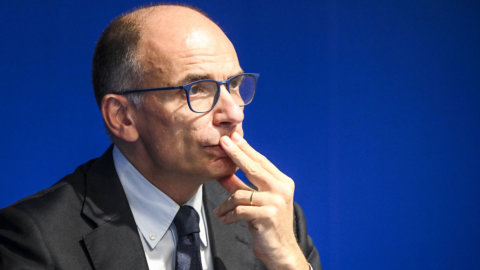Some are calling for the resignation of Giuseppe Vegas for failing to protect savers from the bankruptcies that have involved numerous credit institutions. The subject is delicate. The square wants the head of Vegasbut that doesn't mean he's guilty. After the earthquake in L'Aquila, the square wanted the head of Enzo Boschi, president of the Great Risks Commission, who was even sentenced to six years. Only in 2014, after years of ostracism, the appeal came to establish what was obvious from the beginning and that is that no one in the world is still able to predict earthquakes. The question that must be asked is therefore this: are there reliable tools, which the authorities can use, to warn savers that a financial earthquake is imminent? According to a widespread opinion, voiced by Milena Gabanelli in a broadcast of Report on Rai3, the answer is positive. It would be enough to include the so-called “Probability Scenarios” in the prospectuses, according to which the issuer informs the saver that “…by purchasing these bonds, for example, you have a 62 percent probability of losing half of your capital”.
Vegas would be guilty because it would have prevented that information, which was also proposed within Consob in 2009, from being transmitted to savers. Beyond the color which journalistic investigations are often tinged with (he knew, he denied, he dumped on Europe, etc.), anyone who knows the abc of finance understands what's wrong with Report's statement. In principle, as Filippo Cavazzuti has argued in this newspaper, information on the historical volatility of a certain financial instrument can be used to give the saver an idea of the confidence interval that it is reasonable to expect around the expected return (also extrapolated on the basis of historical results). But we must be very careful: historical volatility does not give any information on the probability that extreme events will occur in the more or less distant future, such as a financial earthquake or the bankruptcy of an issuer. There may be legitimate opinions on the subject, but no objective measures; it is therefore unthinkable that a number such as the aforementioned 62 percent should have the stamp of a public authority. Between 2008 and 2011, before Consob was reprimanded by the European authorities, some banks were not prevented from including probabilistic scenarios in their prospectuses. As Alessandro Plateroti reports in the Sole 24 Ore of June 10, the popular Vicenza and even the Bcc of Bene Vagienna (Cuneo), which was soon commissioned, presented wonderful and amazing scenarios, as if they were the objective result of scientific tests.
The most disconcerting thing is that the thesis of probabilistic scenarios is supported by some presumed insiders who somewhat recall Giampaolo Giuliani, a former employee of the Institute of Physics of Interplanetary Space, who predicted the earthquake, but in Sulmona and not in L'Aquila and on the wrong day (29 May 2009 instead of 6 April). They claim to possess a model (which, however, is neither known nor, as far as is known, has ever been submitted to scientific journals) which allows for the calculation of probabilistic scenarios using the "objective" tools of finance (arbitrage theory, Black and Scholes etc.), even for small broadcasters for which there is no CDS market (provided that CDs are really useful). Lovers of sad science know that this cheerful theory is not true: in order to form an opinion, however necessarily subjective, on an issuer's probability of default, one must do the hard work of studying balance sheets, evaluating industrial prospects, testing the capacity of the management etc. There is no scientific model that the authorities can rely on to warn savers. While Enzo Boschi and the entire Great Risks Commission were sentenced to six years, Mr. Giuliani, accused of procured alarm, was acquitted on the grounds that, according to some consultants, sometimes there had actually been some correlation between the prediction of his model and reality. On the other hand, the scientific journals that dealt with the case said that there was no proof that the Giuliani method worked and that in the majority of cases foreseen by his method, nothing had happened. If you want to attack Vegas, identify the possible responsibilities analytically and respect the little scientific that the economic discipline allows to express.




